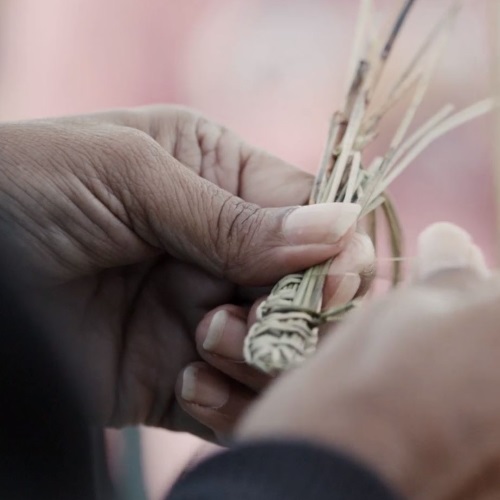30 January 2020
 For more than 40,000 years, the Aboriginal people of Australia have used cultural activities such as storytelling, ceremonies and traditional crafts to pass knowledge from generation to generation.
For more than 40,000 years, the Aboriginal people of Australia have used cultural activities such as storytelling, ceremonies and traditional crafts to pass knowledge from generation to generation.
This exchange between generations is more than a process of teaching and learning, as Aboriginal knowledge and cultural practices are tightly woven into the landscape and history of the people and form an essential part of shaping community identity.
The impact of European colonisation over the past 200 years has eroded much of this traditional network and a heartbreaking amount of indigenous wisdom has been lost forever.
University of South Australia researcher Jelina Haines is leading efforts to preserve what knowledge remains, developing a system of video ethnography and information-mapping designed to capture the integrity and authenticity of Aboriginal Elders’ knowledge.
“Elders’ knowledge is inherited from the generational stories and the experiences of living on a particular land,” Haines says.
“But their knowledge is also continuously evolving and their experiences of living in contemporary Australian society have provided them with another source of new knowledge.
“Preserving these personal histories and the group histories they mesh with is essential for keeping alive their collective cultural and national history.”
The complex and intertwined nature of this knowledge makes the task of capturing it extremely complicated, particularly given its oral nature and the communal manner in which it has traditionally been shared.
Haines was able to develop a unique research model to recognise and capture that complexity, thanks to her long running relationship with the Ngarrindjeri Aboriginal community from the lower lakes of the Murray River in South Australia.
Since emigrating to Australia from the Philippines in the late 1990s, Haines has worked as a project manager with the Ngarrindjeri community and, in particular, has forged a close friendship with Aunty Ellen Trevorrow, with the pair bonding over a shared love of weaving, a craft common to the cultures of both women.
“Ngarrindjeri Elders share stories with younger women, telling the tales of the community while the women are working at basket weaving,” Haines says.
“This is a very traditional way of sharing knowledge, but it’s never just one person talking – one Elder will start the story, and then another will pick it up, and another might finish it. Each person brings themselves to the story as well as sharing the culture of the group.”
Working closely with Aunty Ellen and other members of the Ngarrindjeri community, Haines developed a form of multi-modal ethnography that preserves Aboriginal Elder knowledge in a manner which is both understandable for people outside the community and meaningful and empowering for those inside the community.
“Over the years, so many researchers have tried to study these cultures and it has always fallen short because they have never approached it from the perspective of what is good for the people they are studying,” Haines says.
“Instead, I have done this research with the Elders and for the Elders, and they have been generous and supportive as a result.”
Haines uses a combination of video interviews and dynamic textual ‘knowledge maps’ to capture the life stories of individual Elders and place them in the wider cultural context of their land, history and people.
“With video ethnography, it is them telling the stories, not me,” Haines says. “Anything that they say, is represented exactly as they say it, and in that way, we maintain the integrity of the knowledge.
“And the knowledge maps are graphical and textual charts that show the connections between the various elements of an Elder’s life story. I had a small version of it, and I showed it to one of the Elders, and he said, ‘Oh, it’s like an information landscape’. And we talked about it and it became clear that’s how they think about their knowledge – it’s a landscape. It’s connected to the land.”
Haines believes the model she has developed with the Ngarrindjeri people can be readily applied in other Aboriginal communities, representing a sensitive, respectful way of preserving thousands of years of ancient wisdom.
“There is so much knowledge possessed by these Elders, and we are in real danger of losing it,” Haines says. “It is time we worked with these communities to ensure their stories are always remembered in a way that is true to them.”
A sample of the project’s video ethnography can be found here.
………………………………………………………………………………………………………………………
Media: Dan Lander | mobile: 0408 882 809 | email: dan.lander@unisa.edu.au




